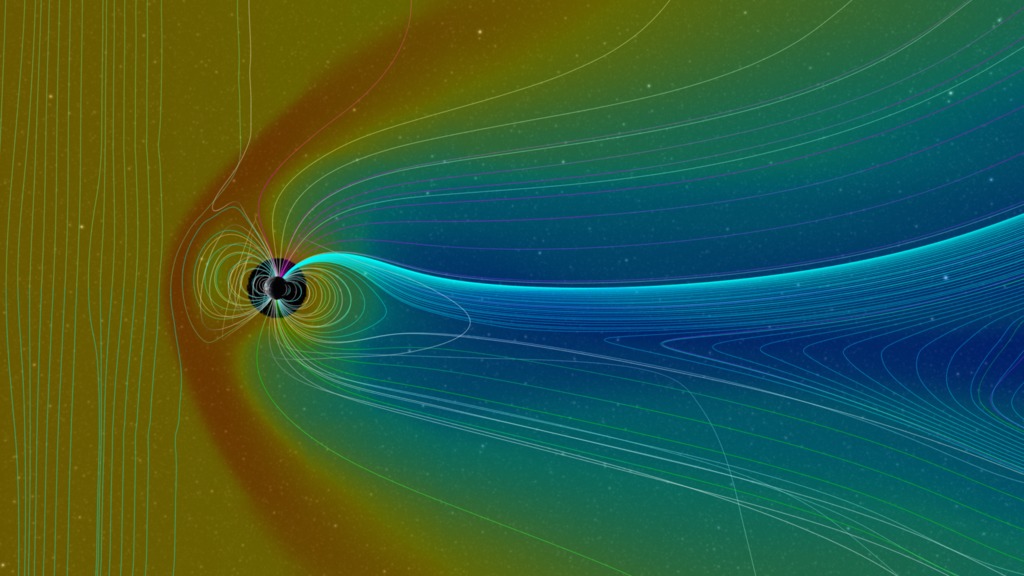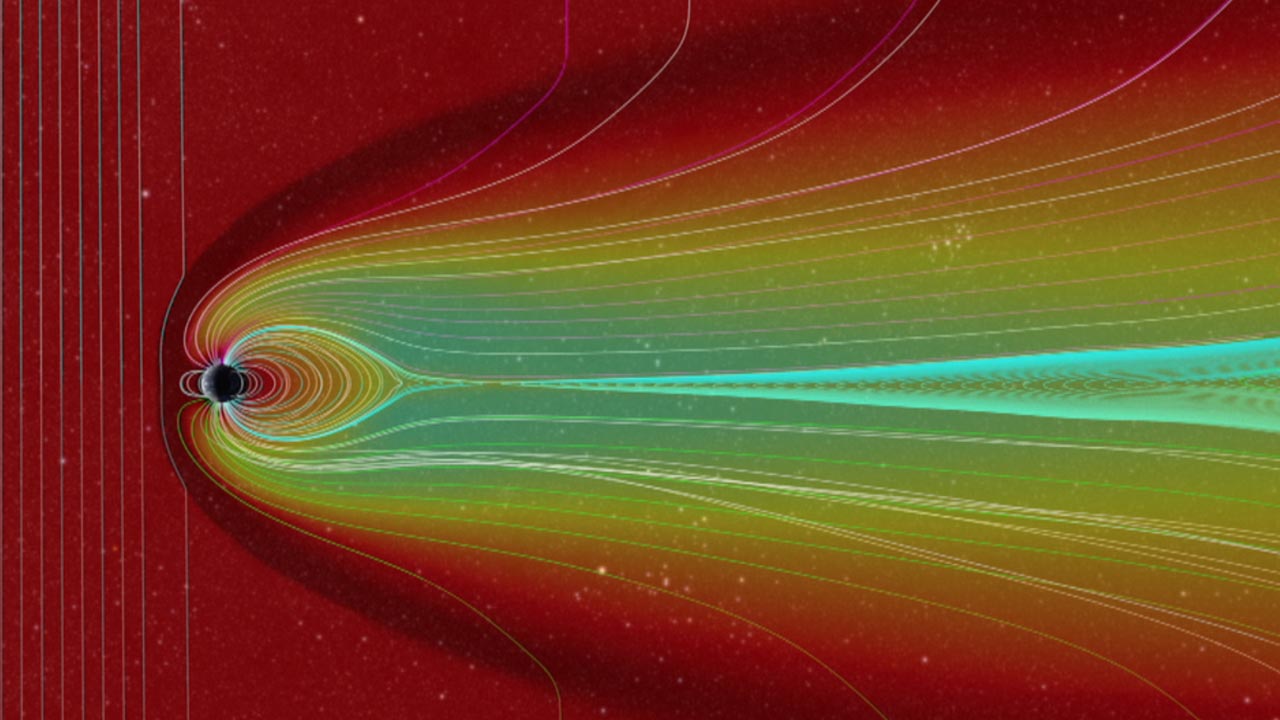Modeling Earth's Magnetism
Surrounding Earth is a giant magnetic field called the magnetosphere. Its shape is defined not only by the planet's north and south magnetic poles, but also by a steady stream of particles coming in from the sun called the solar wind. The magnetosphere is buffeted by this wind and can change shape dramatically when the sun lets loose an immense cloud of gas known as a coronal mass ejection. To understand and predict the impact of such space weather events on Earth, the Community-Coordinated Modeling Center at NASA’s Goddard Space Flight Center routinely runs computer simulations of past eruptions. Solar storms can inflict serious damage on things like power grids and Earth-orbiting satellites. The simulations let scientists estimate the consequences of outbursts of different magnitude, helping us to better plan for the future. Watch the video to learn more.

Our planet's magnetic field changes shape constantly due to strong winds from the sun.
See how a moderate and extreme coronal mass ejection might affect Earth’s magnetic field in this video.

The lines surrounding Earth in this image show the shape of the planet’s magnetic field under normal conditions.

When a coronal mass ejection hits Earth, magnetic field lines are temporarily compressed inward toward the planet.

An extreme coronal mass ejection can distort the magnetic field lines so much that satellites are left completely exposed to harsh space radiation.
Credits
Please give credit for this item to:
NASA's Scientific Visualization Studio
-
Animator
- Tom Bridgman (Global Science and Technology, Inc.)
-
Video editor
- Genna Duberstein (USRA)
-
Narration
- Tom Bridgman (Global Science and Technology, Inc.)
-
Narrator
- Tom Bridgman (Global Science and Technology, Inc.)
-
Producer
- Genna Duberstein (USRA)
-
Scientist
- Michael Hesse (NASA/GSFC)
-
Writer
- Karen Fox (ADNET Systems, Inc.)
Release date
This page was originally published on Tuesday, December 9, 2014.
This page was last updated on Wednesday, May 3, 2023 at 1:50 PM EDT.

